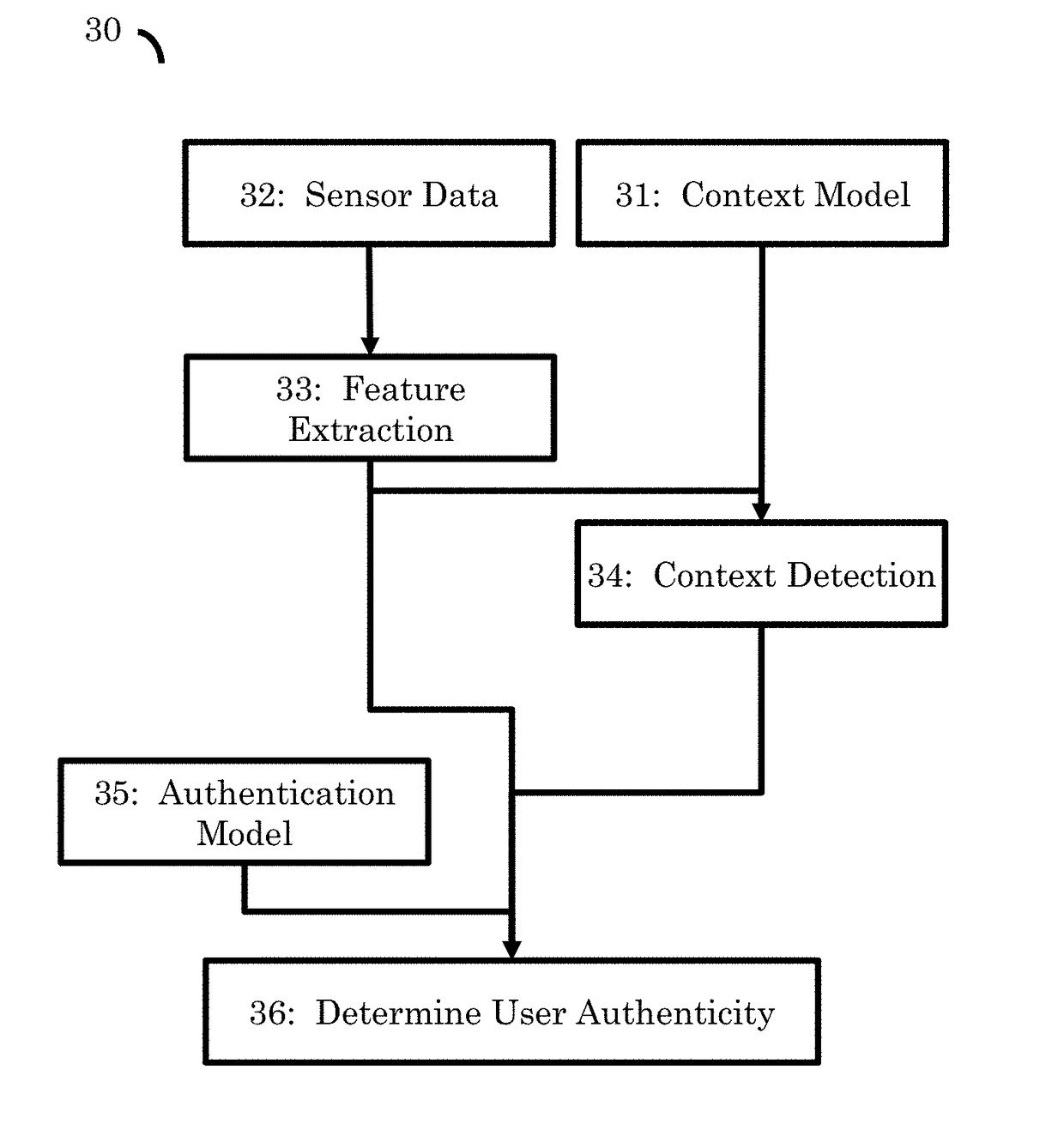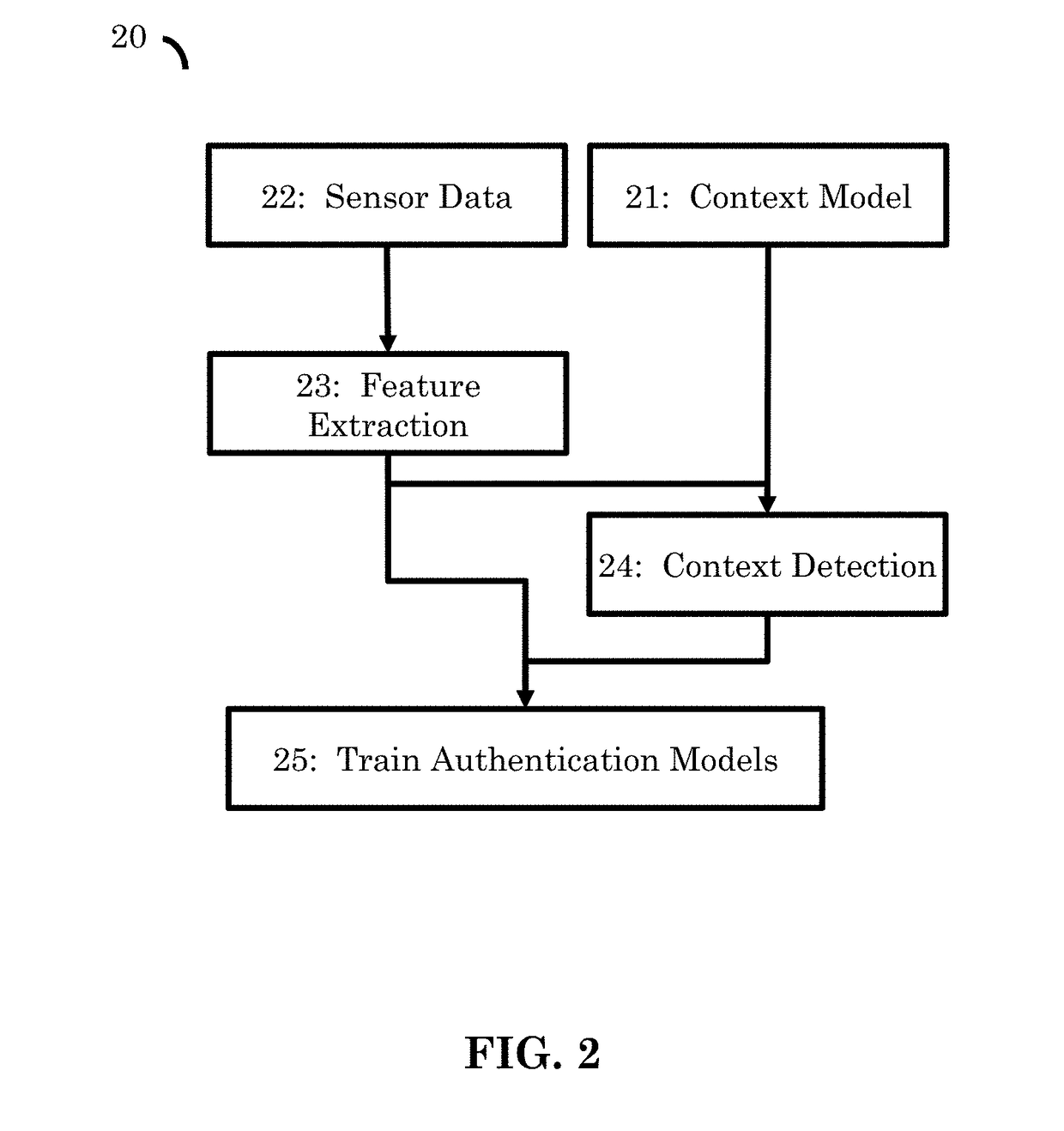Method and system for implicit authentication
a technology of implicit authentication and method, applied in the field of methods and systems for implicit authentication, can solve the problems of smartphone unattended, easy theft of smart phones, and serious security threats by end-users
- Summary
- Abstract
- Description
- Claims
- Application Information
AI Technical Summary
Benefits of technology
Problems solved by technology
Method used
Image
Examples
Embodiment Construction
[0031]Reference is now made in detail to the description of the invention as illustrated in the drawings. While the invention will be described in connection with these drawings, there is no intent to limit it to the embodiment or embodiments disclosed therein.
[0032]The present invention is directed to methods and systems capable of implicitly authenticating users based on information gathered from one or more sensors and an authentication model trained via a machine learning technique.
[0033]FIG. 1 illustrates the general phases that may be involved in the authentication method.
[0034]The method (10) begins with an enrollment phase (20). Initially, the system must be trained in an enrollment phase. In preferred embodiments, this is done whenever a new user needs to be authenticated, or whenever sensors are added or removed from the authentication system. The output from the enrollment phase is at least one authentication model or classifier for the use by a device for authenticating ...
PUM
 Login to View More
Login to View More Abstract
Description
Claims
Application Information
 Login to View More
Login to View More - R&D
- Intellectual Property
- Life Sciences
- Materials
- Tech Scout
- Unparalleled Data Quality
- Higher Quality Content
- 60% Fewer Hallucinations
Browse by: Latest US Patents, China's latest patents, Technical Efficacy Thesaurus, Application Domain, Technology Topic, Popular Technical Reports.
© 2025 PatSnap. All rights reserved.Legal|Privacy policy|Modern Slavery Act Transparency Statement|Sitemap|About US| Contact US: help@patsnap.com



